Eraserhead
Long before he was a director acclaimed around the world for his abstract films such as Lost Highway, Mulholland Drive and Inland Empire and mainstream films like The Straight Story and The Elephant Man, David Lynch was in the same position as so many great filmmakers when they were younger: an ambitious prospective filmmaker with a burning desire to make films and a few ideas of his own.
The first film he made led inadvertently to his second as he wanted to make The Elephant Man but had absolutely no financial backing. He had already approached Anne Bancroft about appearing in the film, something she was very keen to do, and she told her then husband, Mel Brooks, about David Lynch and the project he wanted. Unsure of who this young filmmaker was, Brooks had a private screening of Lynch's first film, made a couple of years previously, and, when the film had finished, Brooks left the theatre, embraced Lynch (who was waiting in the foyer) and said "You are a madman. I love you. You're in." The film in question was Eraserhead, one of the most disturbing feature film debuts I've ever seen.
Loosely based on David Lynch's experience of living in Philadelphia, Eraserhead is set in an unnamed location which is a grey, depressing and oppressive environment and one in which Henry Spencer, a printer, lives. His only interests appear to be dirt, worms, plants (those that will grow in his small apartment anyway) and his girlfriend, Mary X. One day, Henry is completely taken aback when Mary X leaves a message with The Beautiful Girl across the Hall saying that he has been invited round to dinner to dinner with her family. The meal is a horribly tense affair with Mary's mother delivering rather puzzling lines and her father being a man of very few words and even fewer actions, claiming to have lost an arm which grew back but not be sufficient dexterity to allow him to carve the dinner.
During the dinner, Henry is asked to carve the main meal, a man made chicken, smaller than his fist, which appears to be mechanical, kicks and squeals when he puts a knife to it and spurts a horrible black substance. Mary's mother then informs Henry that Mary has had a baby after a very short pregnancy and that Henry must marry Mary and all the while the grandmother sits, completely catatonic (if not dead) in the kitchen. After moving in together, Mary doesn't stay too long before leaving and Henry's child, something he isn't even sure is his, is a repulsive and nightmarish deformed foetus of a child that appears to resemble some sort of prematurely born lamb which makes the most frightful noise all through the night.
There are then a series of random and completely inexplicable segments involving The Beautiful Girl Across the Hall, The Girl in the Radiator and The Man in the Planet plus a couple of Henry's nightmares, one of which shows his head popping off to be replaced by the baby's and ending up at a pencil factory where one of the managers concludes that Henry's brain is suitable material that pencil erasers.
This was the second David Lynch film I ever saw (after Mulholland Drive) and loved the design, the architecture, the nightmarish quality of the child and incredible sound design with deeply oppressive and disturbing music. I had no idea what the film was about or what the characters and situations represented (only David Lynch knows the answers) and it took me a couple of viewings until I could attempt to make an interpretation: It is clearly about a man who is deeply afraid of commitment, fatherhood and the responsibilities that come with being an adult. Nevertheless, it is, as Mel Brooks observed, the work of a "madman" but one who is clearly a genius who isn't afraid to ignore the rules of traditional cinema and make something utterly ambiguous, abstract and bewildering. There is no three act structure, the sort of thing that screenwriting genius Robert McKee advocates, but I don't think the perceived wisdom of filmmaking can really be applied to David Lynch's more mind bending work and it would ruin him if he were forced to make films that please everyone.
I think it is the work of a filmmaker with great skill which has shown in his more celebrated films which tend to be more appreciated in continental Europe and on the cult circuit than amongst mainstream film fans. If I want something entertaining to watch, I would probably go for Mulholland Drive, The Straight Story or The Elephant Man but, when I want to watch something a bit darker and disturbing I would go for the likes of The Texas Chain Saw Massacre, Suspiria or Eraserhead. Lynch himself described the film as a "dream of dark and troubling things " and it is a film that is both dark and troubling in its depiction of fatherhood. Though David Lynch quite appropriately gets all the plaudits for this film, the star is undoubtedly Jack Nance whose appearance and particularly his haircut have become part of our iconography. He perfectly displays every little bit of bemusement, anger and frustration with his situation which makes him a superb protagonist.
The Disc
Extra Features
The disc isn't replete with extra features and only contains the theatrical trailer and David Lynch's biography and filmography up to Mulholland Drive in 2000.
The Picture
Presented in the original aspect ratio of 1.33:1, this beautifully showcases the terrific monochrome photography and the amazingly harsh urban landscape. The special effects make-up and puppetry (also created by Lynch) used to create the deformed baby is utterly convincing and amazingly disturbing -- the use of the word 'nightmarish' has never been more appropriate than here.
David Lynch's background was as a painter and it shows here with him embracing expressionism, surrealism and the avant-garde. Every bit of set decoration and production design is absolutely spot-on and incredible that Lynch was doing this as well as writing, directing and producing.
The Sound
This has been remixed so that the original mono soundtrack is now stereo but, quite frankly, this doesn't make a great deal of difference as just about everything comes through the centre channel and the only difference is where the score comes through the front surrounds. One of the more disturbing elements, and where this has something in common with The Texas Chain Saw Massacre, is the sound design (again a job undertaken by Lynch) as, if you turn the volume right down, it isn't half as effective but, crank the sound up and you are completely immersed in Henry's situation.
Final Thoughts
Eraserhead is one of the most immersive and utterly disturbing films I've seen, and that's saying something given the sheer quantity of horror movies I get through. The standout performance by Jack Nance plus the incredible set design, mise en scène and loud and unrelenting industrial metal and rock music makes is both a visual and aural assault and, although you can take the easy way out and just press the 'stop' button, it is a film that improves the more you watch it and on repeated viewings. It's certainly not an easy watch but, for horror fans, it is something that is a terrific film to watch on a dark evening with the curtains closed.
The disc isn't great and I would love to see a Blu-ray release with some new extras and improved AV quality such as an LPCM 2.0 stereo track and 1080p picture.
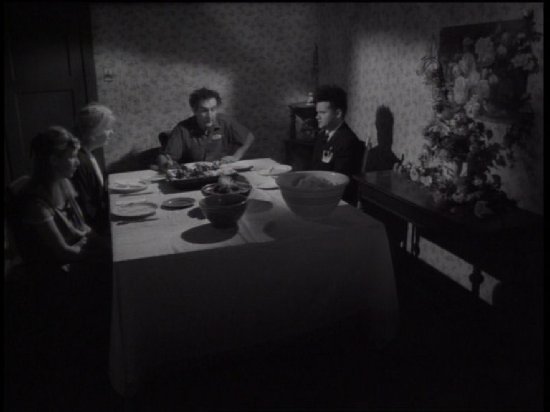
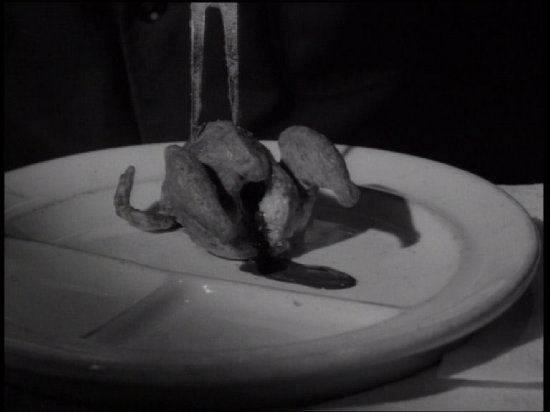
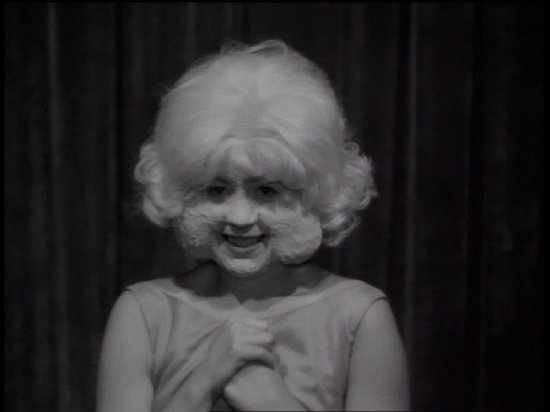
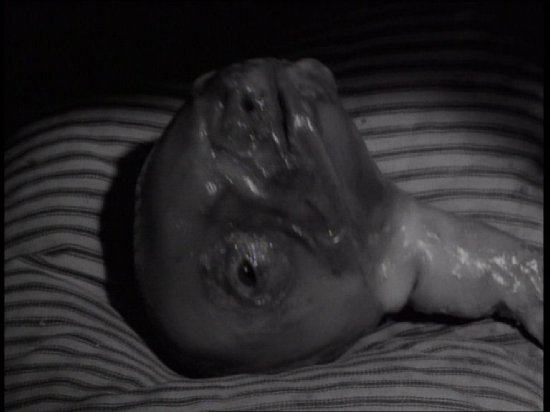
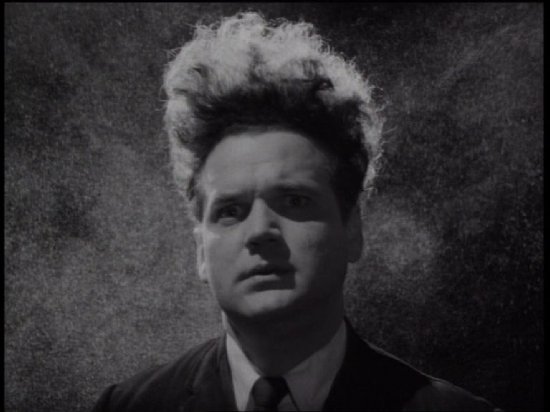
Your Opinions and Comments